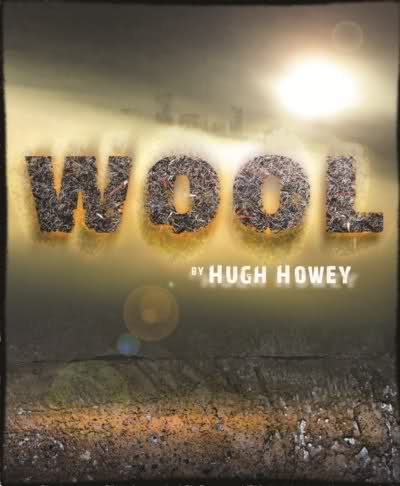
My co-worker, Tom and I sometimes do kindle book exchanges periodically. We sit together and go through the books that we both recommend from each other's kindles. He got me started on keeping track of what I read. He's been keeping an excel list of books for maybe twenty years. I only started tracking last year, which eventually led to starting this blog in January. Anyway, he and I read some similar types of books and he recommended Wool, which falls into the sci fi/dystopia genre.
I've been a bit wary of the whole self-publishing phenomenon. There's been a stigma against these books because the thought was that if a regular publisher had turned down a book, it must not be any good. Clearly this isn't always the case. Self-publishing is also a great way to get books out there that might not have gotten published otherwise for whatever reason. Of course self-publishing can get a bad name. Right now Fifty Shades of Grey is the new hot thing. It started as Twilight fan fiction but has exploded in popularity due to its "mommy porn" plot line. I read the first two chapters as a sample from amazon and literally thought it was one of the worst things I've ever read. Sorry to any fans out there, but it was just so badly written. Anyway, that made me a bit suspicious of Wool, but Hugh Howey proves in this book that self-publishing can be so worth it if you are a talented writer and storyteller.
I have Wool in five separate parts, which is how it was originally published, and I finished the first part today and am almost halfway through the second. The premise of the book is that the atmosphere of the world is toxic and thousands of people live in a giant silo underground. The silo is heavily regulated. People cannot go outside. Admitting they want to do so is punishable by death. Couples can only have a child if they win a lottery ticket, and even then, they have only one year to try before the opportunity passes onto another couple. People speak of an uprising that happened in the past. Much of their history has been wiped out somehow.
The first book focuses on the sheriff, Holston, who investigates the history of the silo and whose actions set off the plot for the rest of the story. His part is only about 65 pages long and is incredibly engrossing. The world itself is familiar; it is a classic dystopian society: repressed and highly regulated. The second part starts exploring more of the silo itself as the mayor and deputy descend into the lower levels to interview someone. While that might not sound particularly interesting, the characters are fascinating, as is the mystery of what they are doing here and what is up with the world outside.
I'll review the other parts as I finish reading them, but I'm so glad I picked this up! The first part was a fast read and very well-written. I can't wait to keep reading!
You can currently buy the Wool series in separate volumes, or in one omnibus. Here are links to the omnibus (it's under $6) at amazon and Barnes & Noble.







